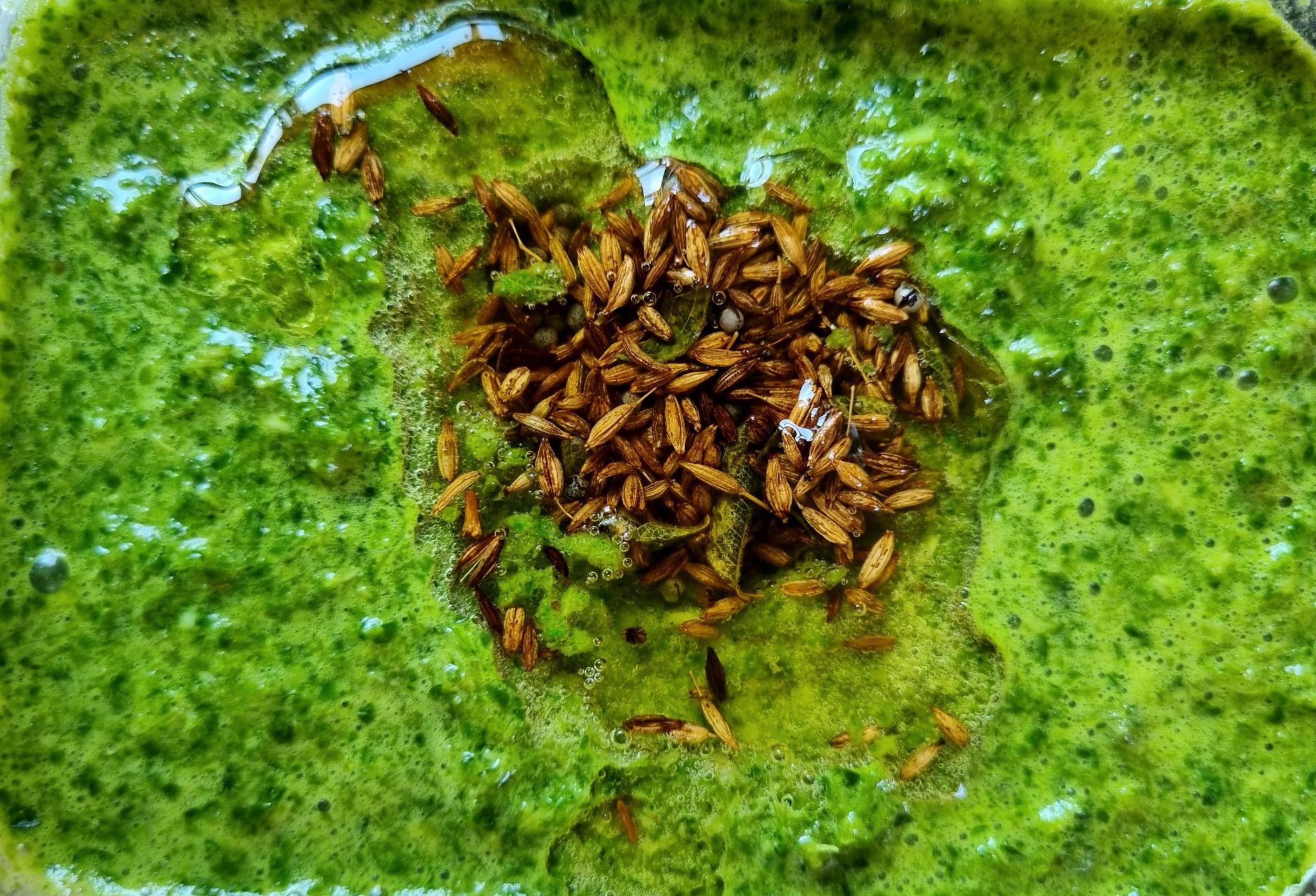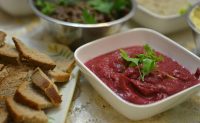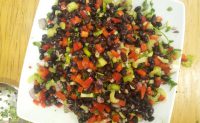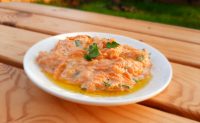Coriander Chutney
By Eyal Shpringer

Spreads and dips such as coriander chutneys take our food to a new level regarding taste and food’s healing properties.
Dips can serve as appetite stimulators in the culinary context, providing variety in flavor, aroma, and texture, especially when food is heavy and needs some lightening and freshness.
In the nutritional-health aspect, dips allow us to enrich the meal, emphasize therapeutic effects, balance the dish, or provide the body with additional vitamins, minerals, and other active nutrients.
Thus, it is evident how almost all traditional kitchens are characterized by spicy dips that accompany the meal. This chutney recipe is based on coriander leaves, a prevalent raw material in kitchens in hot regions of the world.
Ingredients for coriander chutney:
A generous bundle of fresh coriander leaves
A small cup of water
1/2 cup freshly ground or dried coconut
A little hot green pepper – to taste
A piece of fresh ginger, finely chopped
1 tsp. ghee
1/2 tsp. cumin seeds
1/2 tsp. black mustard seeds
A pinch of Hing powder (an Indian spice)
Four curry leaves – fresh or dried. It can be replaced with eight mint leaves
1/2 lemon or lime
1/4 tsp. salt
Preparation of the chutney
Pick the leaves from the Coriander stems (when the Coriander is fresh and juicy, chop the whole bundle and use the stems). Place the leaves in a food processor with water, ginger, coconut, and chili (if you don’t like spicy – do not use the chili). Grind the Coriander until reaching a spread consistency. You can add some water if you want it to make the chutney more liquid.
Heat the ghee in a pan and fry the cumin and mustard seeds until they pop. Add the curry leaves and hing and fry a little more. Cool and add to the ground coriander.
Mix in lemon or lime juice and salt. Chatney can be served with cooked cereal grains, vegetables, legumes, or fish.
Chatney can be stored in the refrigerator for 2-3 days or frozen for future use.
The recipe from a traditional medicine point of view
Chutney is associated with Indian cuisine, originating from a land plagued by heat and humidity. When chutney is based on Coriander, it is considered to have a cooling quality suitable for balancing the heat and humidity of summer. Combining cumin, ghee, chili, and ginger seeds balances the spread, regulates all doshas, and cools the summer heat.
It is interesting to note that Chinese medicine’s approach to Coriander is slightly different. This difference, as usual, contributes to understanding the raw material and its effect. So, according to Chinese medicine, Coriander is warm and spicy. So, on the face of it, there seems to be a contradiction here regarding Ayurvedic sources.
Coriander, according to Chinese medicine
Chinese sources such as the Shenong Bencao Gangmu note that Coriander is a unique food plant that helps and stimulates digestion that tends to weaken at the end of summer. It aids in the digestion of grains and regulates the five zang organs. As a result, coriander strengthens in weakness and even opens the heart’s orifices. Additionally, Coriander is attributed with a clearing and stimulating effect on consciousness.
The Chinese explain that when the climate is humid and hot, moisture can accumulate in the organs, heart, spleen, and blood and cause various diseases characterized by heat and humidity. Despite its warmness (according to Chinese medicine), Coriander also has a penetrating scantiness. This fragrance removes “evil factors” common in hot and humid climates. Thus, Coriander supports the body’s normal “heat,” characterized by proper digestion, while removing pathogenic fever and treating diseases with “heat” symptoms.
Therefore, it is possible to identify the use of Coriander in treating diseases of a hot nature, such as skin diseases, febrile diseases with cutaneous manifestation, and neutralization of body odors. It can also neutralize fish and meat “toxicity” when accompanying these foods or consumed after eating them.
Therapists with a background in Chinese medicine are familiar with the diagnosis of a weak and cold “spleen” when the “liver and blood” are warm. This is a frustrating condition that is difficult to treat because each of these “organ systems” needs a different nutritional approach. Coriander is one of those beautiful foods/plants that can restore the organs to proper functioning; stimulate the spleen-pancreas while calming and cooling the liver and blood. This effect is not surprising when you realize that Coriander belongs to the foods and spice of the respectable Apiaceae (Umbelliferae) family that knows how to get things back on track.
When the recipe is given as part of treatment, it can be combined according to a differential diagnosis to address conditions such as eye diseases, high blood pressure, skin diseases, lack of appetite, and constipation.
The coriander and coriander chutney is a beautiful gift for dealing with the heat and humidity of the spring and late summer.
Eyal Shpringer, A Chinese medicine practitioner and a clinical herbalist specializing in Chinese nutrition and traditional nutritional approaches. Eyal holds a master’s degree in research of East Asian medicines. Since 2007 he has been teaching a postgraduate training program in Chinese and oriental nutrition according to the TEF method and other courses and workshops for practitioners. Eyal co-authored the bestselling book Cooking for Life: A Traditional Nutrition Cookbook for Cancer Patients (Hebrew).
Did you find the recipe interesting? Do you want to continue studying with me?
You are invited to join me on my Instagram page and the Traditional Nutrition and Medicine Facebook group.


